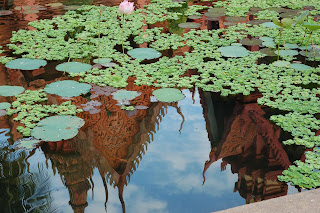It was a long bus ride from Phnom Penh to Siem Reap, with a few detours along the way. The first stop was at a small little highway rest stop where they served local delicacies. These delicacies consisted of roast duck, fruits, deep fried tarantulas or crickets, and a variety of beverages. We were still full from breakfast, and didn't feel like eating.
The next stop was at a small little workshop where they grow silk worms and process the silk to turn it into scarfs and other clothing items. Turned out to be run from a guy who was from Denver, Colorado. He had worked in Cambodia for a number of years, and then eventually retired there. Now he is starting up this little business employing only local women, which keeps them from going to the sweat shops on the outskirts of Phnom Penh. It seemed like a good cause to support, and was positively impacting the small village, so we bought as many scarves as we had money.
Finally we arrived in the modern town of Siem Reap. You can still see remnants of what the town used to be like with small shacks nestled along the river, but now it is being developed as fast as development can take place fueled by the tourist economy. Most of the construction though isn't going to make the lives of the residents any more comfortable, but building luxury hotels, and a modern airport. Once settled into our "luxury" hotel (which wasn't a brothel this time), we climbed on to our bikes to stretch our legs a bit and rode out of town to the Tonle Sap lake for a boat tour. The Tonle Sap is the largest lake in Southeast Asia and feeds the Mekong river. Each year in May, the Mekong delta cannot handle the amount of water flowing through it, so it reverses direction, backing up the Tonle Sap which expands and floods the area for about three months. At Tonle Sap we got onto boat for a sunset cruise along a tributary that feeds into the lake.
"You're getting on that boat?"
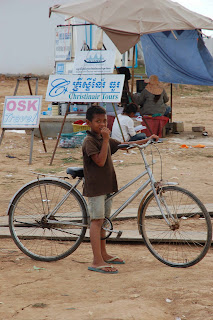
There's bound to be a metaphor in this photo...
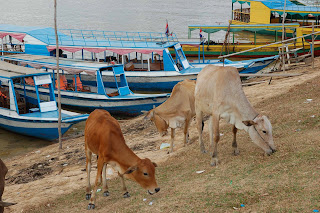
People live along the river their entire lives. Some were equipped with generators, and on the way back in the dimly lit evening we could see the glow of television screens.
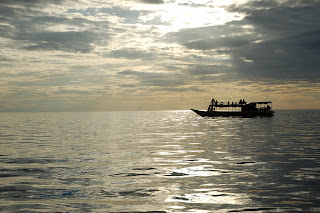
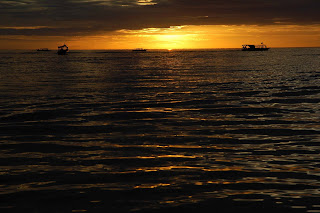
The next day we got riding early and headed out to the Angkor temple site. Our first stop is nicknamed "The Jungle Temple," because they leave a lot of the vegetation on the temple and clear just enough for people to get around.

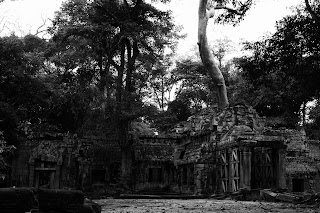
Riding bikes is probably the best way to see Angkor, because you are out in the open and riding next to these temple walls that were constructed thousands of years ago. It is pretty amazing all of this is as well preserved as it is given the hot humid wet climate. SOME tourists just don't appreciate all this majesty....
The next stop was the Terrace of the Elephants (see photo for why it is named this) and the Terrace of the Leper King (not sure why it is called this, but David developed a strange rash since going there).
Elephant Terrace
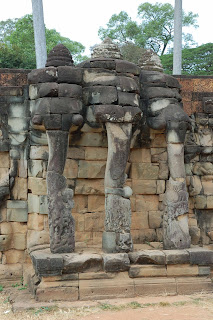
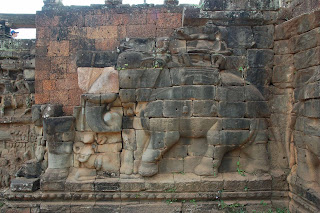

Leper King Terrace


Tuktuk might be the 2nd best way to get around:
The next stop was Bayon. This perhaps is the second most well-known spot in Angkor, with it's 40 some 4 headed towers serenely surveying the land.
These guys were fishing...not sure for what.
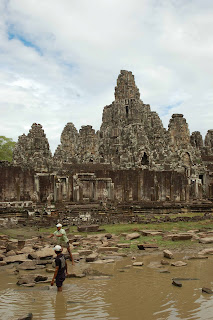
One thing to keep in mind is that these temples were converted to Buddhist sanctuaries for hundreds of years and are still religious centers, so it isn't rare to see statues of Buddha like this one.
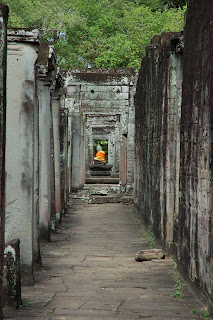

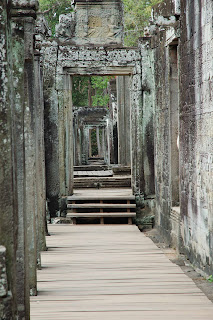 The Elephant and Leper Terraces and Bayon are part of a larger complex called Angkor Thom, and it is surrounded by a moat, with massive bridges that serve as entrances. Along the bridges are representations of a Hindu story called the Churning of the Ocean of Milk. To our untrained eye it looks a bit like a tug of war using a giant multi-headed (hooded) cobra with gods on either side pulling causing the mountain in the middle to "churn". This motif also appears as a large relief on the inner temple of Angkor Wat. Actually, you see it almost everywhere you go. The cobra is also an important symbol in Cambodia, and see it everywhere. Naga is a multi-headed cobra deity, and is usually associated with water; in Buddhism there is a story where it once protected the Budha from the rain. You'll see several seated Buddha statues with the hooded Naga overhead. When you see how heavily dependent Cambodians are on the river system and Tonle Sap for pretty much everything, you get an understanding why Naga is so appealing. Here are some photos of the bridges of Angkor Thom.
The Elephant and Leper Terraces and Bayon are part of a larger complex called Angkor Thom, and it is surrounded by a moat, with massive bridges that serve as entrances. Along the bridges are representations of a Hindu story called the Churning of the Ocean of Milk. To our untrained eye it looks a bit like a tug of war using a giant multi-headed (hooded) cobra with gods on either side pulling causing the mountain in the middle to "churn". This motif also appears as a large relief on the inner temple of Angkor Wat. Actually, you see it almost everywhere you go. The cobra is also an important symbol in Cambodia, and see it everywhere. Naga is a multi-headed cobra deity, and is usually associated with water; in Buddhism there is a story where it once protected the Budha from the rain. You'll see several seated Buddha statues with the hooded Naga overhead. When you see how heavily dependent Cambodians are on the river system and Tonle Sap for pretty much everything, you get an understanding why Naga is so appealing. Here are some photos of the bridges of Angkor Thom.


While the rest of the group headed back into town for lunch, we decided to ride around and get as much time as possible at the site. We headed back to a temple we had passed earlier called Ta Keo. Jenni saw the hundreds of 55 degree steps, and said "That's the place for me."

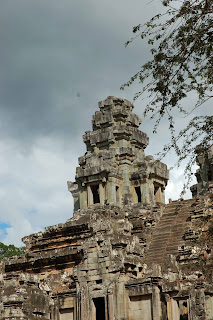
The group returned quickly and for the rest of the afternoon we wandered around Angkor Wat.
Entrance to Angkor Wat, crossing a moat.

The jungle not so far away.
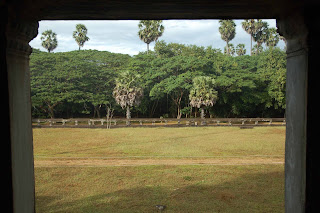
Seated Buddha statue.

One of the 5 towers.
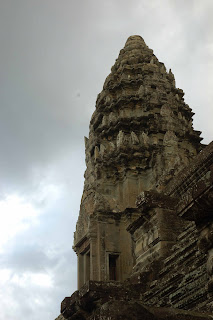
Detail of a relief.
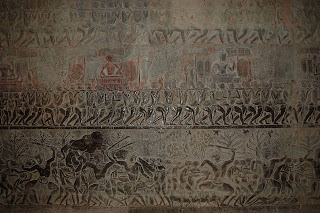
Detail of Churning of the Ocean of Milk. Deity in the middle.
 The five towers.
The five towers.
Group photo in front of Angkor Wat.
We ended our day with another sunset over the jungle, this time with a few thousand of our closest friends.

It offered a nice view of Angkor.

And one last time before we went back to town for dinner and sleep.




















